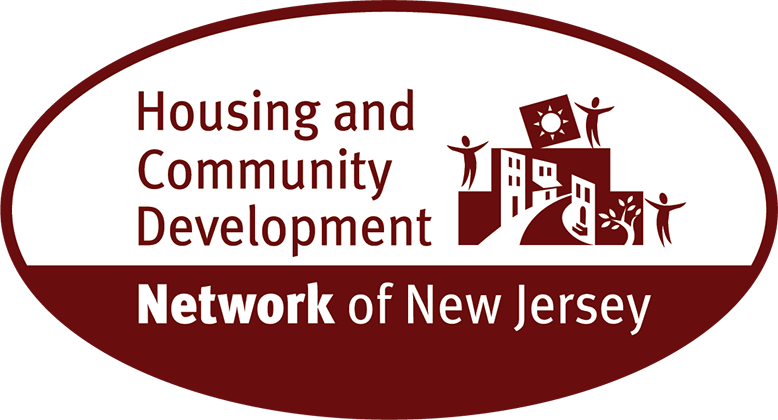| Annual NJ Counts census rescues homeless from cold, mobilizes 100 volunteers |
 Published January 31, 2014 By Bob Makin In an abandoned house in Plainfield, Omar Harris was staying in a room so cold that the Popsicles he recently purchased remained frozen. As snow fell in the wee hours of Wednesday morning, Harris, 45, and four other Plainfield men were pulled from the freezing cold for the statewide NJ Counts homeless census. An annual homeless count and survey is required of each county throughout the country during the last week of January by the U.S. Department of Housing and Urban Development to determine future federal funding level for homeless programs. Above and beyond the federal mandate, social workers, volunteers and police took the men to the Union County Board of Social Services building. There, they were fed a warm meal, given a large canvas bag of toiletries, packaged food and resource information, and asked the survey’s dozen questions about housing, income, benefits, services and family. They then were brought to a hotel or motel, a service exclusive to Union County during both the street portion of NJ Counts, as well as Code Blue, a statewide public safety effort to shelter the homeless when the temperature drops below 32 degrees. During Wednesday morning’s snowfall, the thermometer read 12 degrees. “This is a blessing,” Harris said as he enjoyed a plate of food prepared by Department of Human Services staff. Ending homelessness NJ Counts also helps local service agencies determine the nature and needs of the state’s homeless population, according to Monarch Housing Associates, the program’s Cranford-based coordinator. Monarch said it will release results from this year’s NJ Counts in March. “Many factors combine to push people into the streets, into the woods and into the shelter system,” said Taiisa Telesford Kelly, a Monarch homeless planning associate. “This year’s count is critical as we work to get an accurate count of the homeless that will inform our work to use best practices that we know can end homelessness and create affordable housing in New Jersey.” As a member of Monarch’s Ending Homelessness Team, Kelly guides communities through the process of developing 10-year plans to end homelessness. They include Somerset and Middlesex counties. Middlesex’s “10-year plan” was initiated before the economic downturn of 2008 and the devastating effects of superstorm Sandy in 2012 and needs to be revised, Kelly said. Somerset is in the process of updating its plan, she said. Hunterdon doesn’t have a 10-year plan, she said. Based on HUD guidelines, Union County initiated and continually revives its own 10-year plan, said Maureen Segale Glenn, director of community services for the county Department of Human Services. “HUD initially asked for 10-year plans in 2000,” Glenn said. “By that count, we should have ended homeless-ness by now.” Instead, many Central Jersey middle-class individuals and families have lost their homes and sources of income, advocates said. As a result, more and more families and children are seeking housing, said Yvette Molina, director of communi-ty services at Elijah’s Promise, a New Brunswick-based nonprofit dedicated to combating hunger and empower-ing the homeless. “We’re seeing people that we never saw before,” Molina said. More than 40 percent of households displaced by Sandy were renters, 67 percent of whom earned less than $30,000, according to a 2013 report by Enterprise Community Partners. The storm worsened the problem of affordable rentals by creating more competition for them, said Staci Berger, president-CEO of the Trenton-based Housing and Community Development Network of New Jersey. “Plus, rising costs of rent and mortgages, utilities and groceries have outpaced any income growth,” Berger said. “The lack of affordable home choices in the state has forced more people than ever to seek assistance or even end up on the street.” According to recent NJ Counts surveys, Union County has the largest number of homeless residents in the state with 1,669, up 198 from 2011. Based on the survey’s results, the county received $3.6 million in federal funds last year and has requested $4.2 million this year because of an expected increase in its homeless population, Glenn said. “We do a good job of finding homeless people,” said Glenn, adding that the street count in Elizabeth brought 19 in from the cold on Wednesday. “We work really hard to find them, and sometimes that works against us, because nationally, they’re looking for us to reduce homelessness, and so when we write our (HUD) applications, we really have to make the case for, yes, we’re finding more people, but that’s because we’re really trying to find more people,” she continued. “The federal government would like to end homelessness, and so would we, but if we find people, we’re going to count them and try to serve them with whatever programs we can.” Middlesex advocates said they also expect another increase, having climbed to 1,025 last year from 946 in 2011. Judy Nodes, administrative supervisor of social work at the Somerset County Board of Social Services, said she expected to remain about 260, down from a 2011 spike of 303. Jen Shore, administrator of the Hunterdon County Department of Human Services, said she expected homelessness to continue to decrease in her community from 82 last year. “The most important thing that needs to be mentioned in Hunterdon County is that there are actually homeless people in Hunterdon County,” Shore said. “It’s very easy to focus on the affluence of Hunterdon, but when you work for social services, you see a different face, and that’s not counting the people who deal with the risk of homelessness every day.” Nodes added, “The biggest problem right now is the economy. For people to maintain housing, they need to have the kind of wages that can maintain their houses.” Vicious cycle Recent figures show that homelessness is decreasing around the country, but recent cuts to federal funding through sequestration threaten this progress, Kelly said. Decreased federal funding comes at a time when it is more expensive than ever for New Jersey families to afford housing, she said. “According to the National Low Income Housing Coalition, a family in New Jersey must earn a housing wage of $24.84 an hour to rent a two-bedroom apartment, and the fair-market rent for a two-bedroom apartment is $1,292 per month,” Kelly said. Eileen O’Donnell, executive director of Coming Home of Middlesex County, said the nonprofit organization coordinating efforts to end homelessness draws attention to the goal of creating affordable homes for those at low-income levels. Coming Home also aims to provide community-based case management to assist people on the path to self-sufficiency, O’Donnell said. But Anna Herner, a New Brunswick woman who has combated homelessness since her husband died of a brain aneurism nearly five years ago, said those goals are not being met fast enough. Herner suggested counties and cities fill the affordable housing gap by encouraging developers and contractors to rebuild vacant structures. Be-fore the buildings are sold, they can be used as temporary housing, she said. “The shelter in New Brunswick is only for men, and they only have 40 beds,” Herner said. “The women’s shel-ter is in Edison. It only has 24 beds and fills up quick. Homeless women in New Brunswick, especially mothers with children, have trouble getting there. Something needs to be done before somebody dies out in this cold. Is that what it’s going to take?” Despite being brought out of the cold by a Plainfield police lieutenant, Harris said homelessness often is perpet-uated by police. He accused them of harassing him and keeping him from getting a job. Homeless three times between 1998 and 2005, Sandy York is a member of Elijah Promise’s county-funded Homeless Empowerment Action Response Team, which regularly hits the streets of New Brunswick looking to help those in need. York said that homeless people often are ticketed for loitering or trespassing in public places, such as New Brunswick’s Ferren Mall and train station. “It’s a vicious cycle,” York said. “They wind up getting a criminal record, and they have to go to court. If they don’t show up in court because they couldn’t pay the ticket, obviously because they’re homeless, then they wind up with a warrant out for their arrest. When you try to get a job, now you have a criminal record.” Making a difference York and others Elijah’s Promise staff led more than 20 volunteers under the bridge, in the train station, down the alleyways and through the streets of New Brunswick to conduct the NJ Counts survey on Wednesday evening in 18-degree weather. In addition to New Brunswick and Plainfield, service agencies also mobilized volunteers in Perth Amboy and Woodbridge. More than 100 volunteered throughout Central Jersey. They included Jennie Crespo, director of housing for Plainfield-based Homefirst Interfaith Housing & Family Services, who was among four volunteers to help bring Harris and others in from the cold. “I think it’s important to help, and that’s always been my mission, so I think it’s important to get these people out of the cold and find them a safe place to live,” Crespo said. “Someone needs to make a difference and help people understand that there is a serious crisis going and also to appreciate the better things that they have in their lives,” added Marisol DeOliveira, a frequent Elijah’s Promise from Highland Park and Molina’s sister. “Me showing (the homeless) that I appreciate them, that they’re a human being, maybe that will make a difference, and they’ll come tomorrow to the shelter and seek services.” DeOliveira has helped Elijah’s Promise conduct its portion of the NJ Counts survey for the last five years. To do so, she said she takes a day off from her job in a pediatrician’s office in Highland Park and makes up the time on the weekend. “We are grateful to have the opportunity to work with dedicated volunteers and staff in each of the counties,” Kelly added. In addition to mobilizing street-count volunteers throughout Central Jersey to survey homeless residents and steer them to shelter, service agencies conducted walk-in surveys at various locations. In addition to Elijah’s Promise, they included Samaritan Homeless Interim Program, Somerville; Fisherman’s Mark, Lambertville; Family Success of Hunterdon County, Flemington; Woodbridge Housing Authority, and Salvation Army in Perth Amboy and Plainfield. All also made connections to case-management services, donations and information on resources, such as social services, mental health services, housing, substance abuse resources, disability funding and health care. In some locations, meals, showers, haircuts, flu shots, blood pressure screenings, clothing, hygiene kits, and counseling about the Affordable Care Act also were available. Many surveys also were conducted throughout the week in temporary shelters where Code Blue calls brought several homeless in from the cold. |










